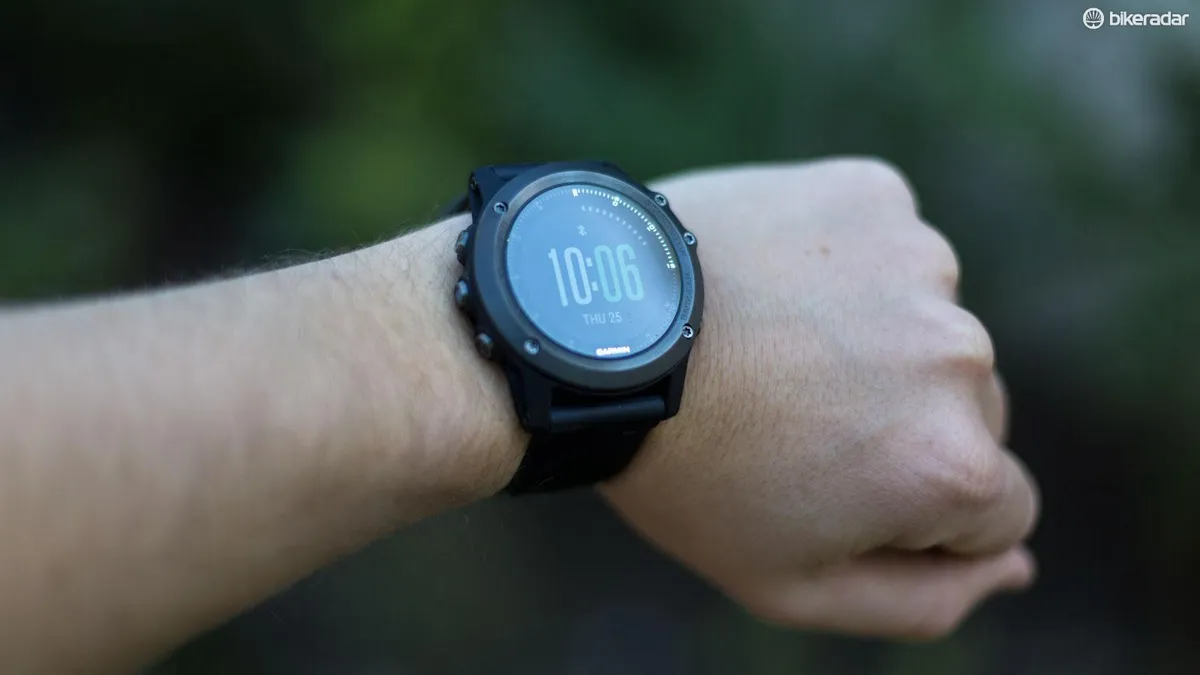Wrist-based heart rate monitors are becoming much more common and we’re now seeing everything from high-end multisport watches to fitness trackers touting the technology.
- Best GPS devices for cycling
- Power vs. heart rate: which is best for training?
- Tips for bike computers, heart-rate monitors and cycling gadgets
It’s not surprising that it's catching on, with many riders relishing the opportunity to ditch the stinky sweat encrusted heart rate strap. But are wrist-based sensors accurate enough?
Of course, the brands producing these products are going to tell you they are, but the trouble is that variables affecting their accuracy can't often be strictly controlled in the real world.
So we’ve set out to discover if these wrist-based optical heart rate monitors might replace the old trusty heart rate strap. We put a Garmin Fenix 3 HR to the test against a standard Garmin heart rate strap in real-world riding conditions to see how accurate the wrist-based option can be.
What is optical heart rate monitoring?
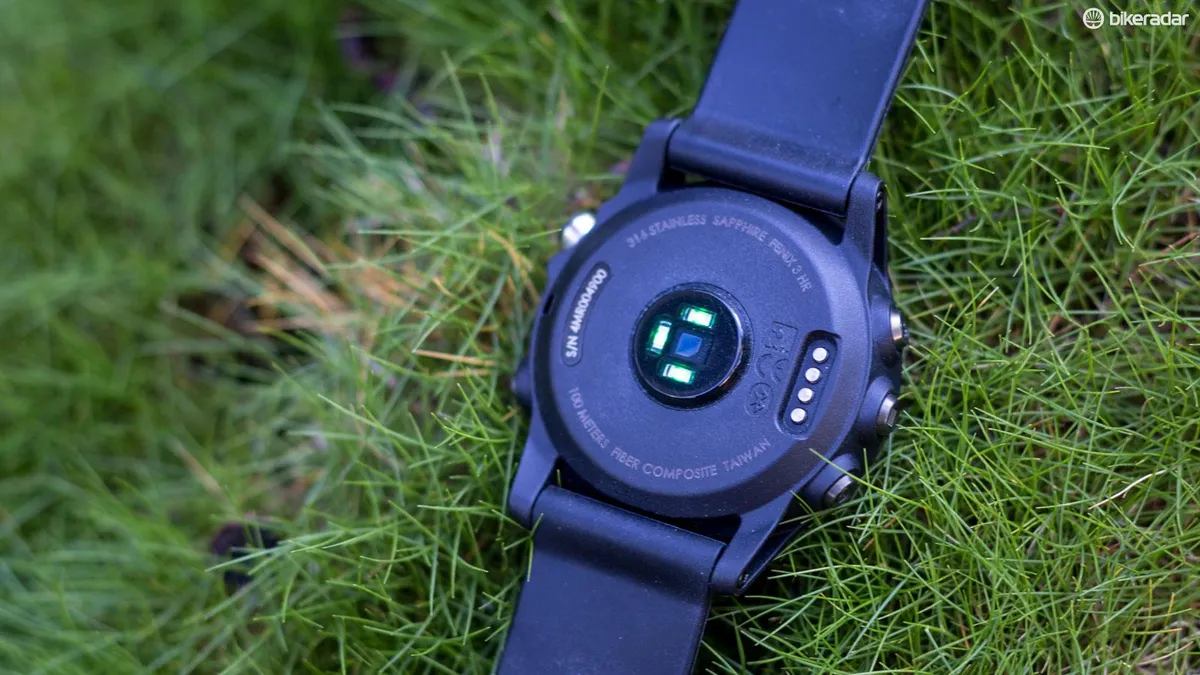
Optical heart rate sensors are not a new innovation by any means and have been around in the cycling industry for a while in the form of sensors like LifeBEAM. Originally designed to monitor the vitals of astronauts and pilots, the LifeBEAM uses a sensor placed against your forehead to read heart rate.
The LifeBEAM and wrist-based sensors are similar to the Photoplethysmography (PPG) finger clips used in hospitals. Most of the wrist-based options now available use a green low-intensity light that is shone through the skin to determine heart rate. As bone, soft tissue and blood all absorb light differently, the optical sensor can then determine heart rate based on the changing light refracted by the blood flowing through your veins.
This is in contrast to a chest strap, which measures the small electrical impulses given off by your heart as the muscles contract. It’s because of the way that these sensors work that they won’t read your heart rate until you get sweaty because they need a conductive medium between the sensor and your skin.
A common thread across both systems is that they need a good connection to your skin, meaning fitting the device is important for an accurate reading.
How accurate is optical heart rate monitoring?
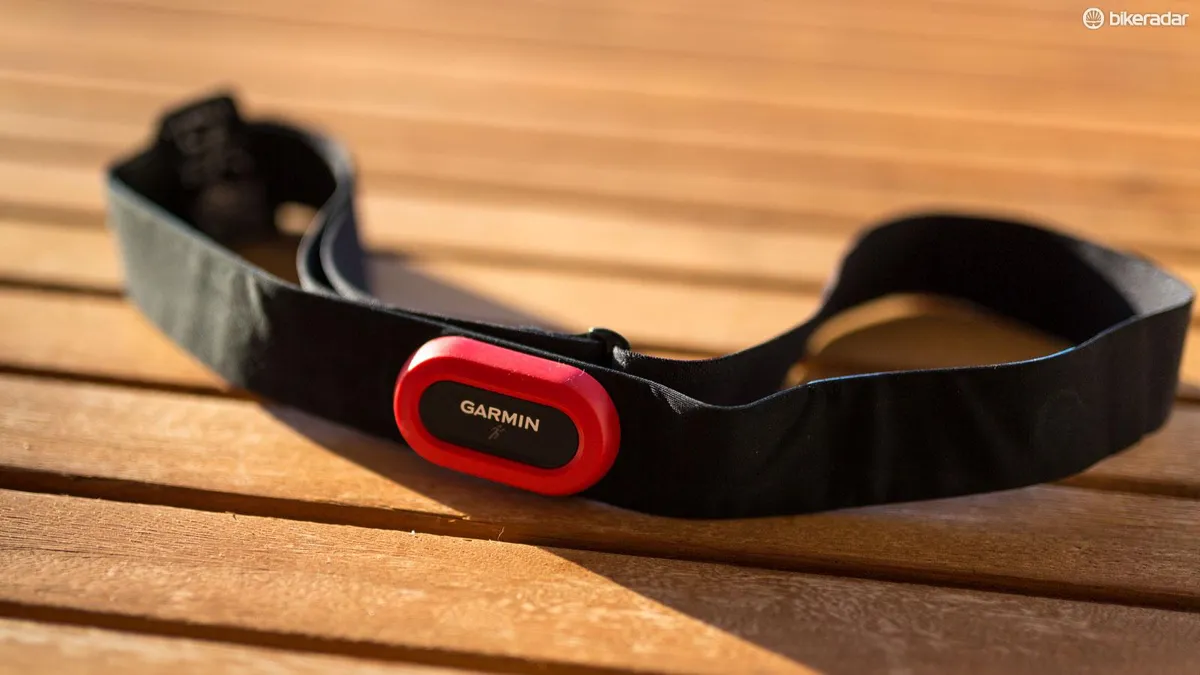
Despite their popularity, the accuracy of wrist-worn heart rate monitors is up for debate. In fact, there’s even a class action lawsuit against FitBit over complaints that the Fitbit Blaze, Charge HR and Surge fail to accurately measure user heart rates.
The Journal of the American Medical Association just published a research letter, and its findings stated that none of the devices tested (FitBit Charge HR, Apple Watch, Mio Alpha and Basis Peak) were able to offer a reliable reading during moderate exercise. The authors went on to say: "Electrode-containing chest monitors should be used when accurate HR measurement is imperative."
Brands seem to be very tight-lipped in regards to how accurate their sensors can be and the only test information I could find was from Mio. However, this test was just conducted on the sensor itself, not a complete watch or fitness tracker.
Quite often the trouble with wrist-based monitors is due to the sensor not maintaining solid contact with the wearer's skin when they're moving. All of the testing I've seen so far has been in a lab-based environment involving runners on a treadmill.
Short of using a power meter, heart rate is the most concrete metric you can use to measure effort. Hitting specific heart rate targets is paramount if you're following a prescribed workout and the outcome of a workout can be vastly different if the wrong zones are hit.
Accuracy of wrist-worn heart rate monitors vs. heart-rate chest straps
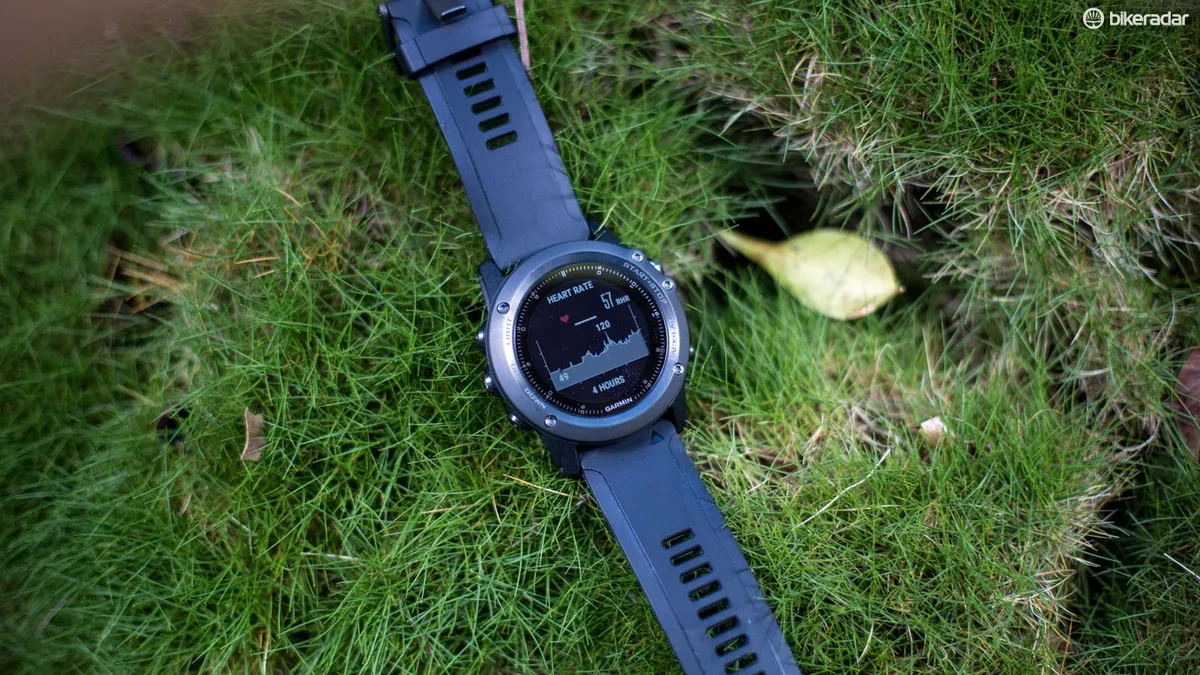
To test the accuracy of the Fenix 3 HR and Garmin’s Elevate heart rate sensor, I used both a standard Garmin heart rate chest strap and the Fenix 3 HR watch in unison and in real world conditions — riding a bike.
It’s worth noting that this is far from a scientific study as I aimed to test the accuracy in real-world conditions, but I controlled all variables as carefully as possible. I should also point out that I only tested one brand's optical sensor and can only speak for the results it posted. Each unit measures heart rate differently and at different intervals.
The testing consisted of indoor riding on the turbo trainer and outdoor road bike and mountain bike rides. Before each ride I made sure the watch was properly fitted, tight and positioned above the wrist bone, as per the user manual.
It’s also worth noting that to fit the watch properly so that the sensor was in position meant wearing the watch considerably tighter than I normally would — two notches up on the strap, to meet the fit instructions prescribed in the user manual.
In the graphs below the red line represents the reading from the Garmin Fenix 3 HR watch and the blue line is the Garmin HR chest strap.
Testing on a turbo trainer
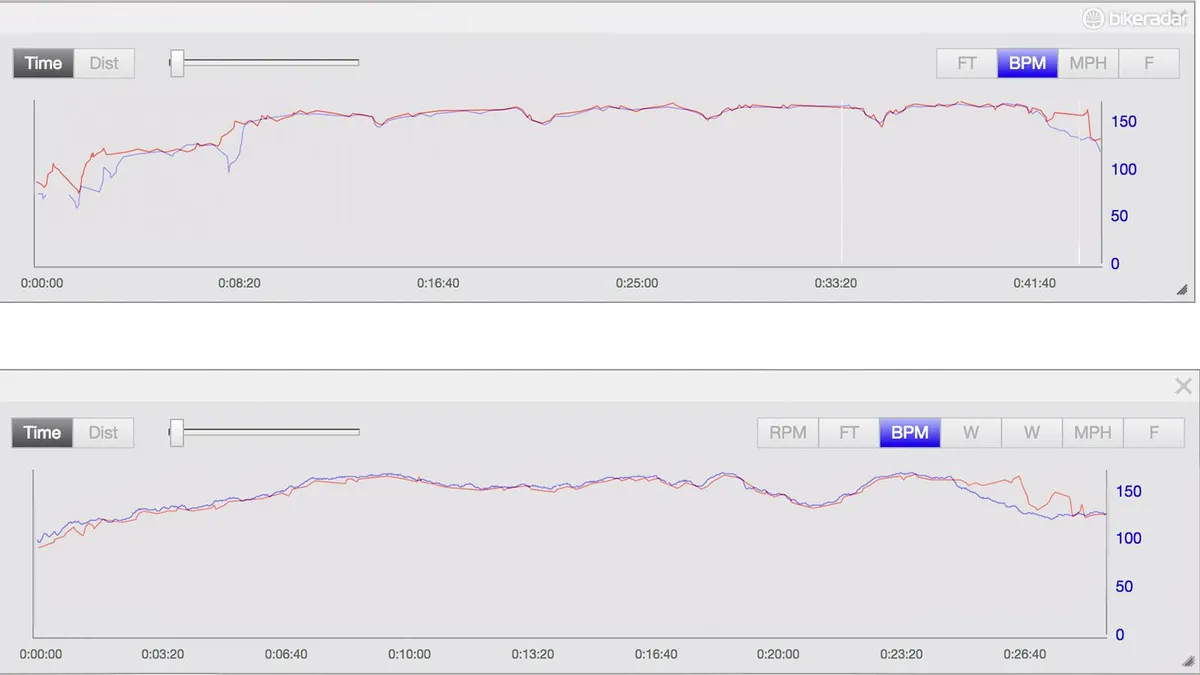
The turbo trainer was the closest to a lab environment this testing got and you can see from the graphs above that the results show both heart rate monitors closely aligning with each other, bar a couple of weird readings:
Ride 1
Fenix HR
HR Strap
Min
75
50
Max
171
171
Average
152
150
ArrayRide 2
Fenix HR
HR Strap
Min
93
97
Max
171
170
Average
150
148
ArrayTesting both units on road bike rides

Once I took the Fenix 3 HR wrist-worn heart-rate monitor (red graph line) out in the rear world, the cracks began to show. The top graph (above) shows quite a bumpy ride with sections of dirt and the bottom graph shows a ride with a decidedly smoother route.
On the bottom ride, there’s also about a ten minute period where the Fenix 3 HR completely cut out. I didn’t notice the outage during the ride and did not change the position or tightness of the watch on my wrist.
As you can see above, on both rides there are considerable amounts of time where the chest strap reading and wrist-based reading are showing as much as 40bpm difference. Even so, the average heart rate throughout the ride is only a one beat per minute difference in both cases.
Ride 1
Fenix HR
HR Strap
Min
70
80
Max
176
178
Average
146
147
ArrayRide 2
Fenix HR
HR Strap
Min
80
80
Max
170
169
Average
137
138
ArrayTesting both units on MTB rides
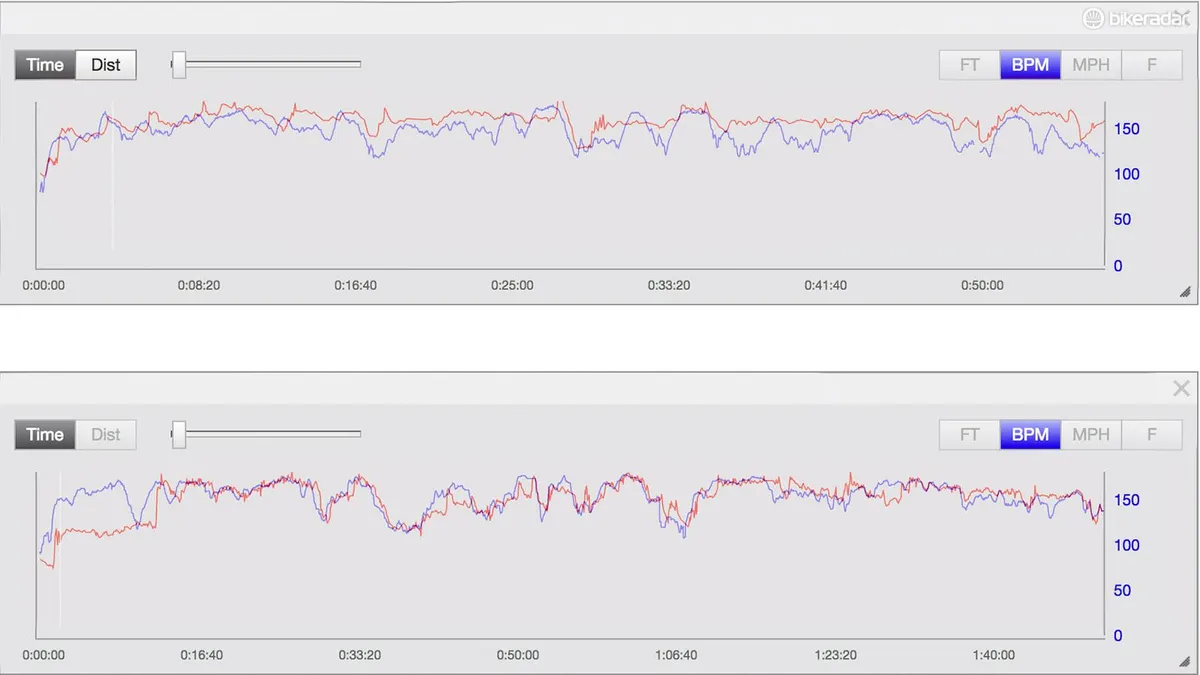
Finally when it came to the mountain bike ride, the profiles look like two completely different ride profiles. While the readings are occasionally within about 10bpm, the majority of the time they seem to track very differently to one another.
Ride 1
Fenix HR
HR Strap
Min
90
81
Max
177
177
Average
150
148
ArrayRide 2
Fenix HR
HR Strap
Min
74
91
Max
180
178
Average
151
154
ArrayConclusion
There are a number of factors at play here that seem to have affected the readings of the Fenix 3 HR wrist-based sensor. First and foremost, I followed the directions when it came to fit and placement, wearing the watch tight and well above my wrist bone while riding.
So, is wrist-based heart rate all it’s cracked up to be and should you spend your hard-earned cash on this new technology?
As you can see with the result from the turbo trainer, the sensor is accurate and tracked almost identically to the heart-rate strap. However, once the rigours, shock and general shaking that comes with riding both road and mountain bikes came into play the watch's point-to-point accuracy decreased greatly, probably because the sensor may not have been able to maintain the same skin contact.
What’s interesting is that despite the difference in point-to-point reading, the minimum, maximum and average heart rates were within a couple of beats per minute throughout.
A factor which came into play — especially on the mountain bike — was as I got sweatier, the watch crept down my arm, particularly while descending. I did try to tighten the strap an extra notch, but my fingertips began to throb and my hand started going numb — too tight.
I approached Garmin with these results to find out if the lack of point-to-point accuracy was something it had come across in its own testing and here's what they had to say: "We are fascinated you have taken the time to do the comparison and are intrigued with those results. As with all Garmin product test [sic], they are conducted in a controlled and consistent environment that enables us to compare internally, but we welcome your results and will keep on file for future."
So, is wrist-based heart rate all it’s cracked up to be and should you spend your hard-earned cash on this new technology? Maybe. If you're following prescribed training plans where you need to be hitting precise zones to achieve a goal, stick to your heart rate strap. If not and you’re not picking data apart with a fine-tooth comb, then a wrist-based heart rate sensor should suffice and allow you pick out general trends in your training.
